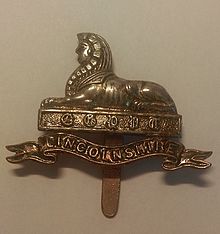102nd Light Anti-Aircraft Regiment, Royal Artillery
The 102nd Light Anti-Aircraft Regiment, Royal Artillery, (102nd LAA Rgt) was an air defence unit of the British Army during World War II.
It served with I Corps in the campaign in North West Europe, at times acting as infantry or administrative troops when the threat of air attack had diminished.
The unit was originally formed in July 1940 at Tollerton Park, near Nottingham as 7th Battalion, Lincolnshire Regiment, as part of the rapid expansion of the Army with wartime conscripts.
[2][3] Late in 1941, Lincolnshire County Division began to be broken up and a number of its units and formations were converted to other roles.
While 205th Bde was converted into a tank brigade, 7th Lincolns was selected to be retrained in the light anti-aircraft (LAA) role equipped with Bofors 40 mm guns.
[3][6][7] In early October 1942 the regiment was joined by a Royal Electrical and Mechanical Engineers (REME) workshop sub-section for each battery, to be ready for mobile warfare.
The main role of a corps LAA regiment was to protect headquarters and gun areas from air attack.
LAA units fired tracer to guide night attacks onto their objectives, and the Bofors guns were much in demand for infantry support.
At the end of this spell, Bobforce advanced under covering fire from Bofors guns and drove the enemy rearguards back 3 miles (4.8 km).


